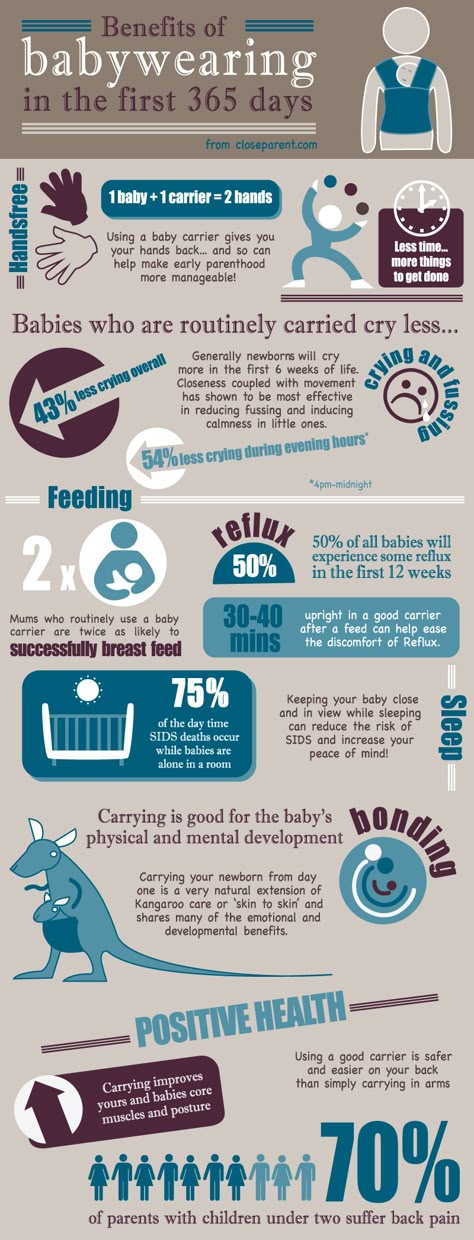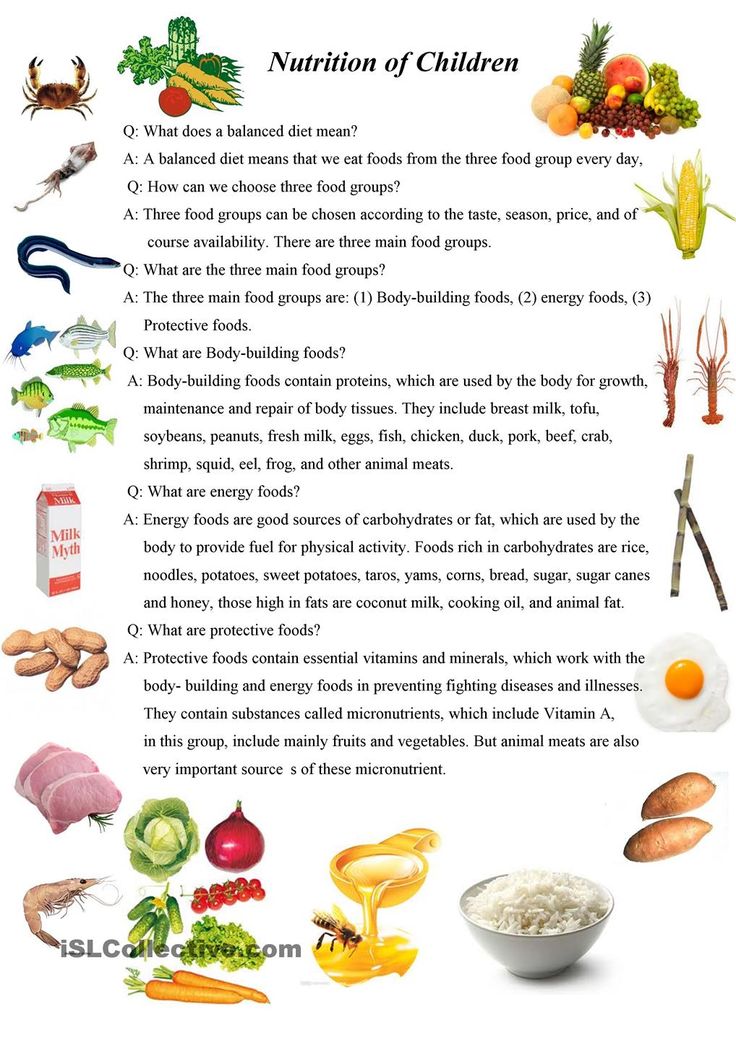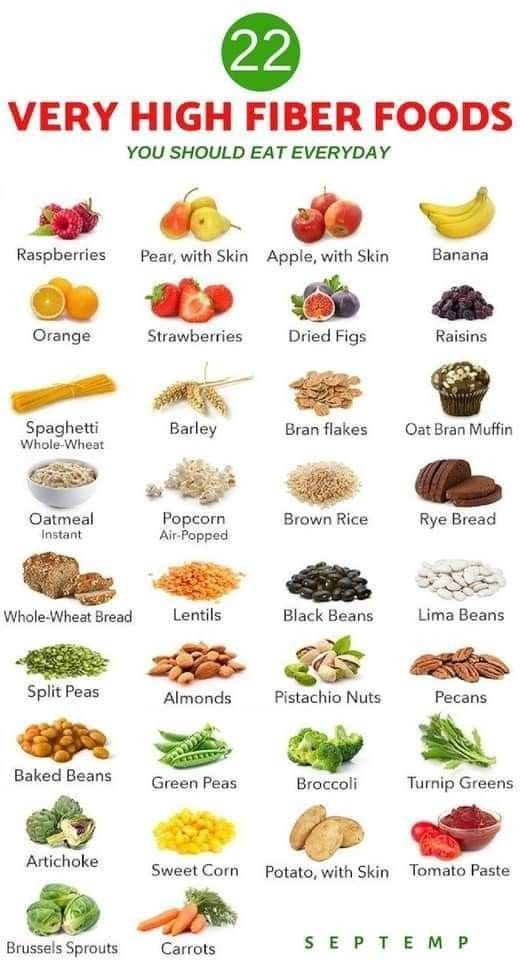Why not to give baby food before 6 months
Feeding your baby: When to start with solid foods
Up to 6 months old
From the first hour of life, through to 6 months old, your baby can receive all of the nutrition she needs to grow and develop from your milk. She doesn’t need anything else – no water, tea, juice, porridge or any other foods or fluids during this period.
Myth: Babies need solid food sooner than 6 months old
When you breastfeed your baby frequently, starting foods earlier than 6 months is not necessary and can even be harmful.
Introducing foods or fluids other than breastmilk to your baby before she is 6 months old can increase her risk of illnesses, such as diarrhoea, which can make her thin and weak, and even be life-threatening. Your baby may also breastfeed less often, so your supply of milk, her most vital food, may decrease.
A mother’s milk is the safest and healthiest food for the first 6 months of life for all children everywhere. It is a constant, safe source of essential nutrition, wherever you and your baby live in the world.
Feeding signs
If you see your baby with her hands near her mouth when she’s still younger than 6 months, you may think she’s not getting enough to eat from your milk alone. Actually your baby is showing normal feeding signs, they are just more developed now that she’s older. It doesn’t mean your baby needs solid food early. Your baby is ready when she is 6 months old.
Myth: Boys need more than breastmilk
Both baby girls and boys need the same amount of food to be healthy and grow strong and smart. Your milk alone will meet the nutrition needs of both a son or a daughter in these first months of life.
6 months and older
When your baby reaches 6 months, his rapid growth and development require more energy and nutrients than your milk alone can provide. He needs to start eating solid foods in addition to breastmilk to keep up with his growing needs.
When to feed your baby solid foods
Feed your baby whenever you see him give feeding signs. After washing hands with soap, start by giving your baby just two to three spoonfuls of soft food, such as porridge, mashed fruits or vegetables, twice a day. Continue to breastfeed as often as before.
After washing hands with soap, start by giving your baby just two to three spoonfuls of soft food, such as porridge, mashed fruits or vegetables, twice a day. Continue to breastfeed as often as before.
Non-breastfed babies
If you do not breastfeed your baby, the best time to introduce her to solid foods is also at 6 months of age. This is the age when all babies, breastfed or not, need to start getting solid foods to ensure they are getting all the nutrition their growing bodies need.
Living with HIV
If you are living with HIV, introduce your baby to his first solid foods at 6 months and continue to breastfeed him while taking your ARV medicines and following your treatment plan.
Don't wait too long to start solid food
Your baby’s body needs the extra energy and nutrients to help him to keep growing. Waiting too long may cause your baby to stop gaining weight at a healthy rate, and put him at risk of becoming thin and weak.
Why You Should Wait Until 6 Months
Recommendations for introducing solids have changed a lot, but there are so many benefits of waiting until 6 months. Read on to find out why.
Read on to find out why.
Recommendations for introducing solids have changed a lot in the last couple of decades. Women used to be pressured to feed rice cereal to their babies as early as a few weeks old for a better night’s sleep.
When I was a baby, moms were told to start solids between 6 weeks and 4 months old, depending on baby’s sleep pattern and if the baby was struggling with reflux or excessive spit up.
When I became a mom, I started introducing solids at 4 months, based on different recommendations. Recent research and the reactions of my kids makes me wish I had waited to introduce solids.
Both the World Health Organization (WHO) and the American Academy of Pediatrics (AAP) recommend exclusive breastfeeding until baby is 6 months old.
“Introducing babies to complementary foods too early can cause them to miss out on important nutrients that come from breast milk and infant formula.” explains Chloe M.
Barrera, MPH, Centers for Disease Control and Prevention
Today, despite these recommendations and studies that advise otherwise, over 54% of women surveyed introduce solids to their infants before 6 months. The survey showed that 16.3% of babies are given solids before 4 months and 38.3% between 4-5 months.
In another survey, parents cited these reasons for introducing solids before 6 months:
- 90% said they thought their baby was old enough to start eating solids
- 71% said their baby seemed hungry a lot of the time
- 55% said their doctor or health care professional recommended this
Why Wait Until 6 Months to Introduce Solids?
Babies are born with very immature digestive systems. While the GI tract is still maturing, infant’s systems are not equipped to digest anything but breast milk. If anything but breastmilk is introduced, even formula, it can permanently alter baby’s gut microbiota, causing problems like necrotizing enterocolitis, diarrheal disease, and allergies.
“In infants, the ring of muscle between the esophagus and the stomach—the lower esophageal sphincter (LES)—is not fully mature, allowing stomach contents to flow backward,” says Andrew E. Mulberg, M.D., a pediatrician and pediatric gastroenterologist. “In time, the LES will mature and open only when the baby swallows and will remain tightly closed the rest of the time, keeping stomach contents where they belong”
That said, some mamas simply don’t produce enough breast milk (and other moms may not want to breastfeed for various reasons). If breastfeeding doesn’t work for you, that’s ok. There are plenty of healthy formulas, and many babies thrive on formula. Consider adding probiotics to baby’s formula to help with immune and gut function.
But that’s just the beginning. Here, a host of other reasons to hold off on introducing solids until 6 months:
1. Long-term health
Holding off on all solids until 6 months of age can boost your child’s long-term health. Because infants who start eating food need less calories from breastmilk, they may lose out on some of the most important benefits of breastfeeding. These include lower risk of obesity, diabetes, respiratory and ear infections, as well as Sudden Infant Death Syndrome (SIDS). Breastfeeding also reduces the frequency of doctor visits, hospitalizations, and prescriptions, according to the CDC.
Because infants who start eating food need less calories from breastmilk, they may lose out on some of the most important benefits of breastfeeding. These include lower risk of obesity, diabetes, respiratory and ear infections, as well as Sudden Infant Death Syndrome (SIDS). Breastfeeding also reduces the frequency of doctor visits, hospitalizations, and prescriptions, according to the CDC.
2. Improved immune system
“One of the benefits of breastmilk is that each mother provides custom-designed milk to protect her infant,” according to Dr. Sears. “When a baby is exposed to a new germ, mother’s body manufactures antibodies to that germ.” One study suggests that these maternal antibodies in breast milk improve an infant’s intestinal immune system—an effect that continues to benefit baby well into adulthood.
3. Allergy Prevention
Breastfeeding exclusively for the first six months has been shown to significantly lessen the risk and severity of food allergies in families with a strong history of them. It also reduces the risk of skin sensitivities, like eczema.
It also reduces the risk of skin sensitivities, like eczema.
To further prevent allergies, studies suggest introducing allergenic foods as soon as baby is ready to try solids can reduce your child’s risk of developing food allergies by up to 80 percent. But since babies can’t exactly eat nuts or even peanut butter, I recommend trying a product called Ready, Set, Food!, which gives parents the option to add the most common allergenic foods (eggs, nuts, and milk) to breastmilk, formula, or puree in a safe and effective way.
4. Higher IQ
One study found that exclusive breastfeeding for 6 months or longer was associated with a higher IQ. At seven-year followups, the IQ of exclusively breastfed babies was an average of 3.8 points higher gain than those who were not exclusively breastfeed during this time period. Researchers think this is because maternal milk is rich in fatty acids and other bioactive components essential for brain development.
5. Mama’s Milk Supply
The best way to maintain your milk supply is to keep nursing—nursing is all about supply and demand. When you start introducing solids, baby needs less breast milk since he/she is getting calories elsewhere. But babies under 6 months of age get all of the calories and nutrients they need from breast milk, so there is no need to put your supply at risk by introducing solids.
When you start introducing solids, baby needs less breast milk since he/she is getting calories elsewhere. But babies under 6 months of age get all of the calories and nutrients they need from breast milk, so there is no need to put your supply at risk by introducing solids.
Get free updates on baby’s first year! – Free Updates on First Year [In-article]
Sign me up!
There Are Always Exceptions
Like just about anything with babies, there is no hard-and-fast rule when it comes to introducing solids. At the end of the day, every baby is different, and every baby develops at different speeds. Some babies are more advanced and may be ready for solid foods around 5-5.5 months; other babies may not be ready for solid foods until 7-8 months. And for other babies, your pediatrician may recommend starting solids if baby needs extra calories or nutrition.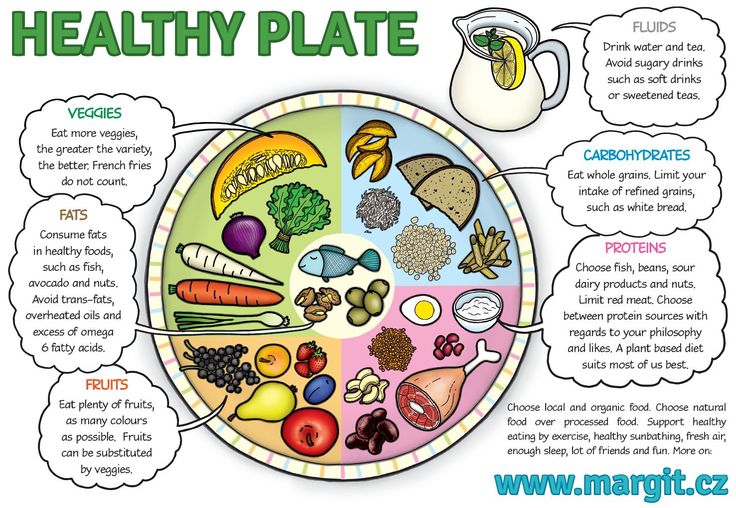 Don’t focus too much on the number if it seems like your baby is showing signs that he/she is ready a littler earlier or a little later. Always work with your doctor to best determine the right time to introduce solids to your baby.
Don’t focus too much on the number if it seems like your baby is showing signs that he/she is ready a littler earlier or a little later. Always work with your doctor to best determine the right time to introduce solids to your baby.
A Note About Introducing Solids
Waiting until after 6 months of age to introduce solids and water is important for optimal long-term health. After 6 months, watch your baby for signs of readiness. Baby should be able to support his/her head very well and sit up on his/her own. Baby may even start to show interest, by reaching for your food.
If baby reaches 6 months and doesn’t seem ready for solids, talk to your pediatrician about how to proceed. For most babies, iron stores begin to drop around this time—many babies will begin to need more nutrition than mom’s milk alone can provide. Waiting too long to introduce solids can also lead to delayed developmental skills, food texture sensitivities, and allergies.
Once baby is ready to start solids, go slowly. Just because you’re ready to start introducing solids doesn’t mean you can feed baby whatever you’re eating. Start with complementary foods and continue breastfeeding. Check out this article to explore the best iron-rich foods for baby.
The WHO recommends that, in addition to breast milk, baby eats
- solids 2-3 times a day between 6-8 months,
- 3-4 times a day between 9-11 months,
- 3-4 times a day with an additional snack 1-2 times a day between 12-24 months.
Ready to start introducing solids? I recommend trying baby led weaning. Once you start, watch for signs of discomfort, like indigestion, constipation, diarrhea, and increased spitting up. If baby shows signs of discomfort, he/she may not be ready just yet. Reduce the amount of food you’re introducing and consider adding probiotics to help with digestion. If that doesn’t work, take a little break and try again in a few days.
How About You?
When did you start feeding baby solids? How did you know your baby was ready?
Diet for a 4-6 month old baby
Your baby is already 4 months old. He has noticeably grown up, become more active, is interested in objects that fall into his field of vision, carefully examines and reaches for them. The emotional reactions of the child have become much richer: he joyfully smiles at all the people whom he often sees more and more often, makes various sounds.
You are still breastfeeding your baby or have had to switch to mixed or formula feeding. The child is actively growing, and only with breast milk or infant formula, he can no longer always get all the necessary nutrients. And that means it's time to think about complementary foods. nine0003
The optimal time to start its introduction is between 4 and 6 months, regardless of whether the baby is receiving breast milk or formula. This is the time when children respond best to new foods. Up to 4 months, the child is not yet ready to perceive and digest any other food. And with the late introduction of complementary foods - after 6 months, children already have significant deficiencies of individual nutrients and, first of all, micronutrients (minerals, vitamins, long-chain polyunsaturated fatty acids, etc.). In addition, toddlers at this age often refuse new foods, they have delayed development of chewing skills for thick foods, and inadequate eating habits are formed. It is important to know that, no matter how strange it may seem at first glance, with a delayed appointment of complementary foods, allergic reactions more often occur on them. nine0003
Up to 4 months, the child is not yet ready to perceive and digest any other food. And with the late introduction of complementary foods - after 6 months, children already have significant deficiencies of individual nutrients and, first of all, micronutrients (minerals, vitamins, long-chain polyunsaturated fatty acids, etc.). In addition, toddlers at this age often refuse new foods, they have delayed development of chewing skills for thick foods, and inadequate eating habits are formed. It is important to know that, no matter how strange it may seem at first glance, with a delayed appointment of complementary foods, allergic reactions more often occur on them. nine0003
When is it advisable to introduce complementary foods as early as 4 months, and when can you wait until 5.5 or even 6 months? To resolve this issue, be sure to consult a pediatrician.
As a rule, at an earlier age (4 - 4.5 months), complementary foods are introduced to children at risk of developing iron deficiency anemia, as well as children with insufficient weight gain and with functional digestive disorders.
The optimal time to start complementary foods for a healthy baby is between 5 and 5.5 months of age. nine0003
The World Health Organization recommends that breastfed babies should be introduced to complementary foods from 6 months of age. From the point of view of domestic pediatricians, which is based on extensive practical experience and scientific research, this is possible only in cases where the child was born on time, without malnutrition (since in these cases the mineral reserves are very small), he is healthy, grows well and develops. In addition, the mother should also be healthy, eat well and use either specialized enriched foods for pregnant and lactating women, or vitamin and mineral complexes in courses. Such restrictions are associated with the depletion of iron stores even in a completely healthy child by 5-5.5 months of age and a significant increase in the risk of anemia in the absence of complementary foods rich or fortified with iron. There are other deficits as well. nine0003
nine0003
The first complementary food can be vegetable puree or porridge, fruit puree is better to give the baby later - after tasty sweet fruits, children usually eat vegetable puree and cereals worse, often refuse them altogether.
Where is the best place to start? In cases where the child has a tendency to constipation or he puts on weight too quickly, preference should be given to vegetables. With a high probability of developing anemia, unstable stools and small weight gains - from baby cereals enriched with micronutrients. And if you started introducing complementary foods with cereals, then the second product will be vegetables and vice versa. nine0003
If the first complementary food is introduced at 6 months, it must be baby porridge enriched with iron and other minerals and vitamins, the intake of which with breast milk is no longer enough.
Another important complementary food product is mashed meat. It contains iron, which is easily absorbed. And adding meat to vegetables improves the absorption of iron from them. It is advisable to introduce meat puree to a child at the age of 6 months. Only the daily use of children's enriched porridge and meat puree can satisfy the needs of babies in iron, zinc and other micronutrients. nine0003
It is advisable to introduce meat puree to a child at the age of 6 months. Only the daily use of children's enriched porridge and meat puree can satisfy the needs of babies in iron, zinc and other micronutrients. nine0003
But it is better to introduce juices later, when the child already receives the main complementary foods - vegetables, cereals, meat and fruits. After all, complementary foods are needed so that the baby receives all the substances necessary for growth and development, and there are very few in their juices, including vitamins and minerals.
Juices should not be given between feedings, but after the child has eaten porridge or vegetables with meat puree, as well as for an afternoon snack. The habit of drinking juice between meals leads to frequent snacking in the future, a love of sweets is instilled, children have more tooth decay and an increased risk of obesity. nine0003
With the start of the introduction of complementary foods, the child is gradually transferred to a 5-time feeding regimen.
Rules for the introduction of complementary foods:
- preference should be given to baby products of industrial production, they are made from environmentally friendly raw materials, have a guaranteed composition and degree of grinding
- Complementary foods should be offered to the baby by spoon at the start of feeding, before breastfeeding (formula feeding)
- the volume of the product increases gradually, starting with ½ - 1 spoon, and in 7 - 10 days we bring it to the age norm, subsequent products within the same group (cereals from other cereals or new vegetables)
- can be entered faster, in 5 - 7 days
- start introduction with monocomponent products
- it is undesirable to give a new product in the afternoon, it is important to follow how the child reacts to it
- do not introduce new products in the event of acute illnesses, as well as before and immediately after prophylactic vaccination (should be abstained for several days)
When introducing a new type of complementary food, first try one product, gradually increasing its amount, and then gradually “dilute” this product with a new one. For example, vegetable complementary foods can be started with a teaspoon of zucchini puree. During the week, give the baby only this product, gradually increasing its volume. After a week, add a teaspoon of mashed broccoli or cauliflower to the zucchini puree and continue to increase the total volume every day. Vegetable puree from three types of vegetables will be optimal. The portion should correspond to the age norm. Over time, you can replace the introduced vegetables with others faster. nine0003
For example, vegetable complementary foods can be started with a teaspoon of zucchini puree. During the week, give the baby only this product, gradually increasing its volume. After a week, add a teaspoon of mashed broccoli or cauliflower to the zucchini puree and continue to increase the total volume every day. Vegetable puree from three types of vegetables will be optimal. The portion should correspond to the age norm. Over time, you can replace the introduced vegetables with others faster. nine0003
After the introduction of one vegetable (bringing its volume to the required amount), you can proceed to the intake of porridge, and diversify the vegetable diet later.
If the child did not like the dish, for example, broccoli, do not give up and continue to offer this vegetable in a small amount - 1-2 spoons daily, you can not even once, but 2-3 times before meals, and after 7 - 10, and sometimes 15 days, the baby will get used to the new taste. This diversifies the diet, will help to form the right taste habits in the baby. nine0003
nine0003
Spoon-feeding should be done with patience and care. Forced feeding is unacceptable!
In the diet of healthy children, porridge is usually introduced after vegetables (with the exception of healthy breastfed children, when complementary foods are introduced from 6 months). It is better to start with dairy-free gluten-free cereals - buckwheat, corn, rice. At the same time, it is important to use porridge for baby food of industrial production, which contains a complex of vitamins and minerals. In addition, it is already ready for use, you just need to dilute it with breast milk or the mixture that the baby receives. nine0003
Children suffering from food allergies are introduced complementary foods at 5-5.5 months. The rules for the introduction of products are the same as for healthy children, in all cases it is introduced slowly and begins with hypoallergenic products. Be sure to take into account individual tolerance. The difference is only in the correction of the diet, taking into account the identified allergens.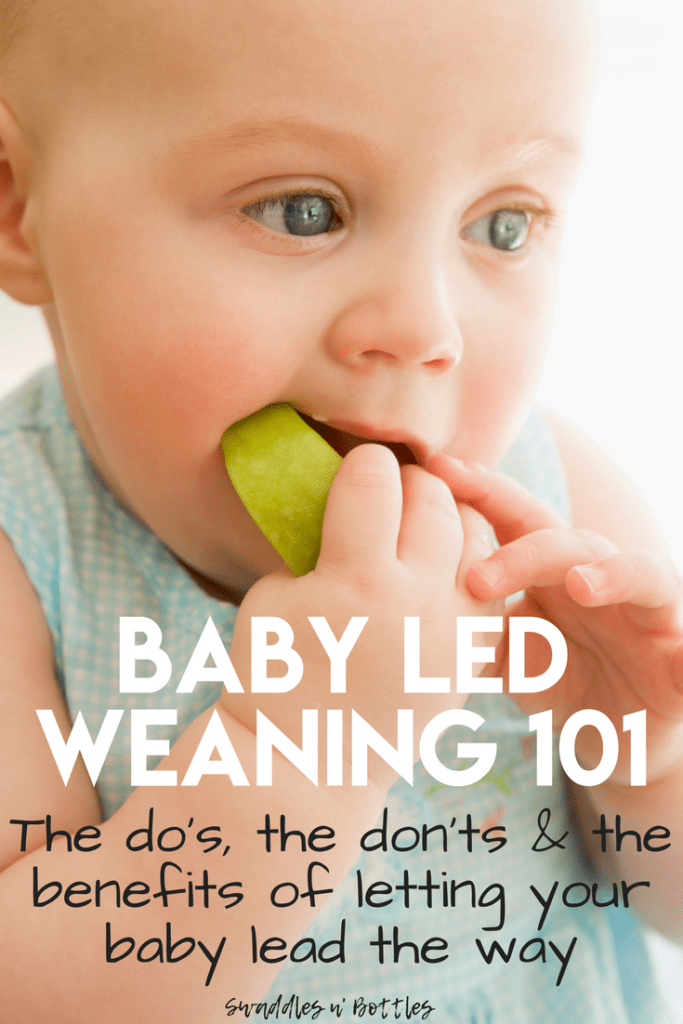 From meat products, preference should first be given to mashed turkey and rabbit.
From meat products, preference should first be given to mashed turkey and rabbit.
Diets for different age periods
Explain how you can make a diet, it is better to use a few examples that will help you navigate in compiling a menu specifically for your child.
From 5 months, the volume of one feeding is on average 200 ml.
Option 1.
If your baby started receiving complementary foods from 4-5 months, then at 6 months his diet should look like this:
| I feeding 6 hours | Breast milk or VHI* | 200 ml |
| II feeding 10 hours | Dairy-free porridge** Supplementation with breast milk or VHI* | 150 g 50 ml |
| III feeding 14 hours | Vegetable puree Meat puree Vegetable oil Supplemental breast milk or VHI* | 150 g 5 - 30 g 1 tsp 30 ml |
| IV feeding 18 hours | Fruit puree Breast milk or VHI* | 60 g 140 ml |
| V feeding 22 hours | Breast milk or VHI* | 200 ml |
* - infant formula
** - diluted with breast milk or VHI
Option 2.
* - infant formula Option 3. : ** - diluted with breast milk Up to 7 months, increase the volume of porridge and vegetable puree to 150 g and introduce fruit puree. The materials were prepared by the staff of the Healthy and Sick Child Nutrition Laboratory of the National Research Center for Children's Health of the Ministry of Health of Russia and are based on the recommendations given in the National Program for Optimizing the Feeding of Children in the First Year of Life in the Russian Federation, approved at the XV Congress of Pediatricians of Russia (02.2009d.) Introduction of complementary foods How to introduce complementary foods correctly is one of the most pressing issues that concern parents. In the first months of life, the main food for the baby is breast milk or an adapted milk formula, however, as the child grows and develops, this becomes insufficient and it is necessary to think about the introduction of complementary foods. nine0003 Your baby is over 4 months old. He has noticeably grown up, become more active, is interested in objects that fall into his field of vision, carefully examines them and reaches for them. When should complementary foods be started? According to the Program for optimizing the feeding of infants in the first year of life in the Russian Federation (2019), the recommended age for the introduction of complementary foods is in the range from 4 to 6 months. The following points will help determine the readiness of the baby for the introduction of complementary foods: 1. Food interest - you can check its presence as follows: during your meal, give the baby an empty spoon or fork, and if he plays with it, licks it, then there is no food interest yet; but if the child is dissatisfied with the fact that the spoon is empty, food interest has probably appeared. 2. The child can sit alone or with support. It is unacceptable to feed the child lying down, because he may choke. 3. Extinction of the “pushing out” reflex - when the baby pushes out of the mouth both the offered food and the pacifier, etc. Why is it not recommended to introduce complementary foods before 4 and after 6 months of life? Before 4 months of life, the baby is not yet ready to digest food other than breast milk or infant formula. By this age, a number of digestive enzymes mature, a sufficient level of local immunity is formed, which reduces the risk of developing allergic reactions, the child acquires the ability to swallow semi-liquid and thicker food, which is due to the extinction of the “spoon ejection reflex”. The introduction of complementary foods after 6 months can cause a pronounced deficiency of micronutrients (iron, zinc, etc. Complementary feeding guidelines: 1. introduce a new product in the first half of the day to track possible reactions to it; 2. cereals, vegetable / fruit / meat purees should be introduced, starting with monocomponent ones, gradually adding other products of this group; 3. start giving a new product with 1/2 teaspoon, gradually increasing the volume to the age norm within a week; 4. It is not recommended to introduce new products during acute infectious diseases or at some special moments (moving to another apartment, leaving the city, on vacation, illness of parents, etc.). nine0003 What is the best way to start complementary foods? The first complementary food can be anything. With the start of the introduction of complementary foods, the child is gradually transferred to a 5-time feeding regimen. If the baby shows that he is full and no longer wants to eat (for example, leaning back or turning away from food), then you should not continue to force him to feed, because this can lead to eating disorders in the future. Also, do not force the child to eat as much as possible before bedtime in the hope that he will not wake up for nightly feedings. Traditionally, in our country, complementary foods begin with vegetables or cereals. nine0003 Vegetables: zucchini, broccoli, cauliflower, pumpkin, etc. If the child did not like the dish, for example, broccoli, do not give up on your plan and continue to offer this vegetable in small quantities daily, you can even not once, but 2-3 times, and after a while (7-14 days) the baby will get used to the new taste. This diversifies his diet, will help form the right taste habits in the child. As for cereals, it is worth starting with dairy-free gluten-free ones - buckwheat, corn, rice. You can use commercial baby food porridge, which is enriched primarily with iron. In addition, such porridge is already ready to eat, you just need to dilute it with water, which will save you a lot of time. nine0003 It is also recommended to add oil to food, for example, vegetable puree to vegetable puree, and butter to porridge. Of meat products, lean meats, such as mashed turkey or rabbit, are most preferred to start complementary foods. When introducing fruit purees (apple, pear, peach, prunes, etc.) into your baby's diet, you should pay special attention to the composition of the product - it is important that it does not contain added sugar. Fish is a source of easily digestible protein and contains a large amount of polyunsaturated fatty acids, including the omega-3 class, as well as vitamins B2, B12, and minerals. Preference should be given to oceanic fish, preferably white (cod, hake, pollock, sea bass, etc.), salmon can be recommended from red, and pike perch from river. nine0003 Fermented milk products are prepared using a special starter culture that breaks down milk protein, so that the baby can get an indispensable set of amino acids in a well-available form. Recommendations and timing of the introduction of complementary foods for children at risk of developing food allergies and suffering from food allergies are the same as for healthy children. Delayed introduction of highly allergenic foods has previously been recommended to prevent the development of allergic diseases in children at risk. There is now evidence that this practice may lead to an increase rather than a decrease in the incidence of food allergies. The most common highly allergenic foods include cow's milk, chicken eggs, soybeans, wheat, peanuts, tree nuts, shellfish and fish. If a child has a high risk of developing allergies or an existing allergic disease, it is recommended to consult a pediatrician, an allergist-immunologist before introducing highly allergenic products. By the age of 8 months, when all the main food groups have already been introduced and your baby is improving his skills to eat on his own, special attention should be paid to the diversity of the composition of dishes and the change in food consistency - from puree to finely and coarsely ground. Soft foods cut into small pieces (fruits, vegetables, meat, etc.) are perfect for a little gourmet, which diversifies his diet and will contribute to the formation of chewing skills. By 9-12 months, most babies have the dexterity to drink from a cup (holding with both hands) and to eat foods prepared for other family members. This behavior needs to be encouraged, but combined with regular feeding to meet energy and nutrient requirements. It is advisable to use industrial products that are designed specifically for young children after a year. What should not be given to the baby? nine0282 It is not recommended to add salt or sugar to food to enhance the taste. Drinks that should be avoided include fruit juices, whole cow and goat milk (whole milk is not recommended for children under one year old, and even longer, due to a high risk of developing iron deficiency and increased kidney stress), sweet fruit drinks, compotes and carbonated drinks. Also, some foods should be excluded from the diet of infants: solid round foods (for example, nuts, grapes, raw carrots, raisins, peas, etc.), due to the fact that the child can choke on them. nine0003 It is not recommended to eat products with added sugar, for example, confectionery (marshmallow, marshmallow, marmalade, jam, jam, cookies, waffles, etc.), etc. You should not give your child the meat of large predatory fish (shark, bigeye tuna, king mackerel, swordfish): these types of fish accumulate more harmful substances than others. It is forbidden to give honey to children under one year old due to the fact that it may contain spores of Clostridium botulinum bacteria, which in the still immature digestive system of babies are able to multiply, produce toxins directly inside the intestines and, thus, cause infant botulism, which can be fatal. Do not give babies raw meat, fish, eggs, caviar, salted fish, soft pickled cheeses because of the risk of intestinal infections. If you follow all these simple rules, your baby will grow up healthy and happy! Diets for different ages References: 1. Methodological recommendations. The program for optimizing the feeding of children in the first year of life in the Russian Federation. [Internet]. - M.: Union of Pediatricians of Russia, 2019. [Methodicheskie rekomendaczii. Programma optimizaczii vskarmlivaniya detej pervogo goda zhizni v Rossijskoj Federaczii. [Internet]. – Moscow: Soyuz pediatrov Rossii, 2019.(In Russ.).] Available: http://www.pediatr-russia.ru/information/dokumenty/other-docs/nacprog1year_2019.pdf Link active as of 20.04.2020 2. Duryea T.K. Introducing solid foods and vitamin and mineral supplementation during infancy. In: Post T, ed. UpToDate . Waltham, Mass.: UpToDate; 2020. I feeding
6 hours Breast milk or VHI* 200 ml II feeding
10 hours Dairy-free porridge**
Fruit puree 150 g
20 g III feeding
14 hours Vegetable puree
Meat puree Vegetable oil
Fruit juice 150 g
5 - 30 g
1 tsp
60 ml IV feeding
18 hours Fruit puree
Breast milk or VHI* 40 g
140 ml V feeding
22 hours Breast milk or VHI* 200 ml
** - diluted with breast milk or VMS 
I feeding
6 hours Breast milk II feeding
10 hours Dairy-free porridge**
Breast milk supplement 100 g III feeding
14 hours Vegetable puree
Meat puree Vegetable oil
Breast milk supplement 100 g
5 - 30 g
1 tsp IV feeding
18 hours Breast milk V feeding nine0079 Breast milk
22 hours 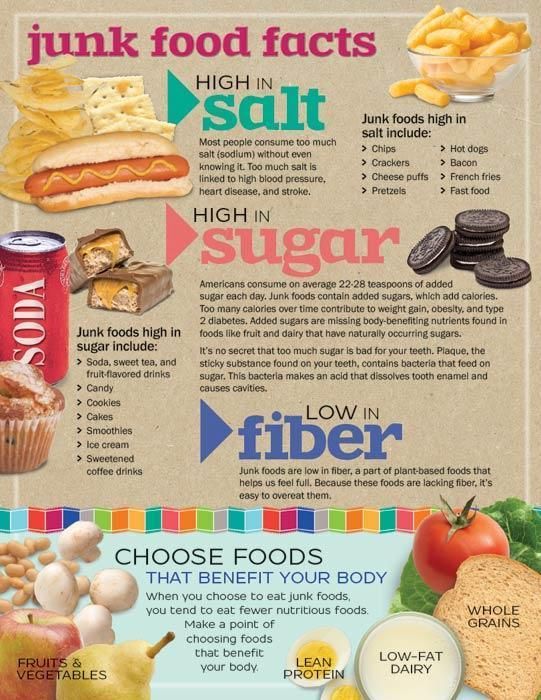
Union of Pediatricians of Russia
 The child's emotional reactions have become much richer: he smiles happily at all people, makes various sounds. Perhaps you notice that the child looks into your plate with interest, closely monitors what and how you eat, does this mean that it is time to introduce complementary foods? And where is the best place to start? Let's figure it out! nine0003
The child's emotional reactions have become much richer: he smiles happily at all people, makes various sounds. Perhaps you notice that the child looks into your plate with interest, closely monitors what and how you eat, does this mean that it is time to introduce complementary foods? And where is the best place to start? Let's figure it out! nine0003  “But how does a child understand that there should be food in a spoon?” Parents often ask. The answer is quite simple: take your baby to the table with you so that he can see how you eat! nine0003
“But how does a child understand that there should be food in a spoon?” Parents often ask. The answer is quite simple: take your baby to the table with you so that he can see how you eat! nine0003 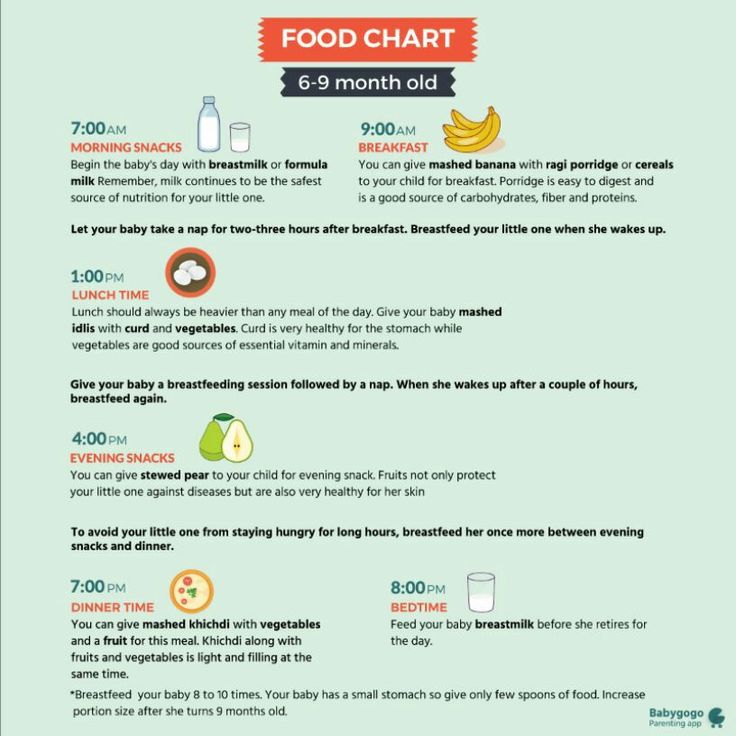 ) and lead to a delay in the formation of chewing skills for thick foods. Too late the introduction of a variety of products increases the risk of allergic reactions. Remember that the timing of the introduction of complementary foods is set individually, taking into account the readiness of the child to accept new foods. nine0003
) and lead to a delay in the formation of chewing skills for thick foods. Too late the introduction of a variety of products increases the risk of allergic reactions. Remember that the timing of the introduction of complementary foods is set individually, taking into account the readiness of the child to accept new foods. nine0003  Often parents worry that if the child first tries the fruit, then because of its sweet taste, he will refuse other foods. We hasten to reassure you: breast milk is also sweet, so babies may like sweet fruits / berries more, but this does not mean at all that he will refuse vegetables or cereal. Traditionally, they begin to introduce complementary foods in the form of mashed potatoes, but if the child shows interest in “pieces”, then, observing the safety rules, you can give them. Also, along with the introduction of complementary foods, you can offer the child water. nine0003
Often parents worry that if the child first tries the fruit, then because of its sweet taste, he will refuse other foods. We hasten to reassure you: breast milk is also sweet, so babies may like sweet fruits / berries more, but this does not mean at all that he will refuse vegetables or cereal. Traditionally, they begin to introduce complementary foods in the form of mashed potatoes, but if the child shows interest in “pieces”, then, observing the safety rules, you can give them. Also, along with the introduction of complementary foods, you can offer the child water. nine0003 
 Meat puree contains iron, which is easily absorbed, and adding meat to vegetables improves the absorption of this micronutrient from them. Subsequently, the daily use of children's enriched porridge and mashed meat allows you to meet the needs of babies for iron, zinc and other micronutrients. nine0003
Meat puree contains iron, which is easily absorbed, and adding meat to vegetables improves the absorption of this micronutrient from them. Subsequently, the daily use of children's enriched porridge and mashed meat allows you to meet the needs of babies for iron, zinc and other micronutrients. nine0003  Some foods have added prebiotics, certain vitamins and minerals. Their regular use favorably affects the functioning of the intestines, increases appetite and the absorption of micronutrients.
Some foods have added prebiotics, certain vitamins and minerals. Their regular use favorably affects the functioning of the intestines, increases appetite and the absorption of micronutrients.  nine0003
nine0003 
 outcome. nine0003
outcome. nine0003


